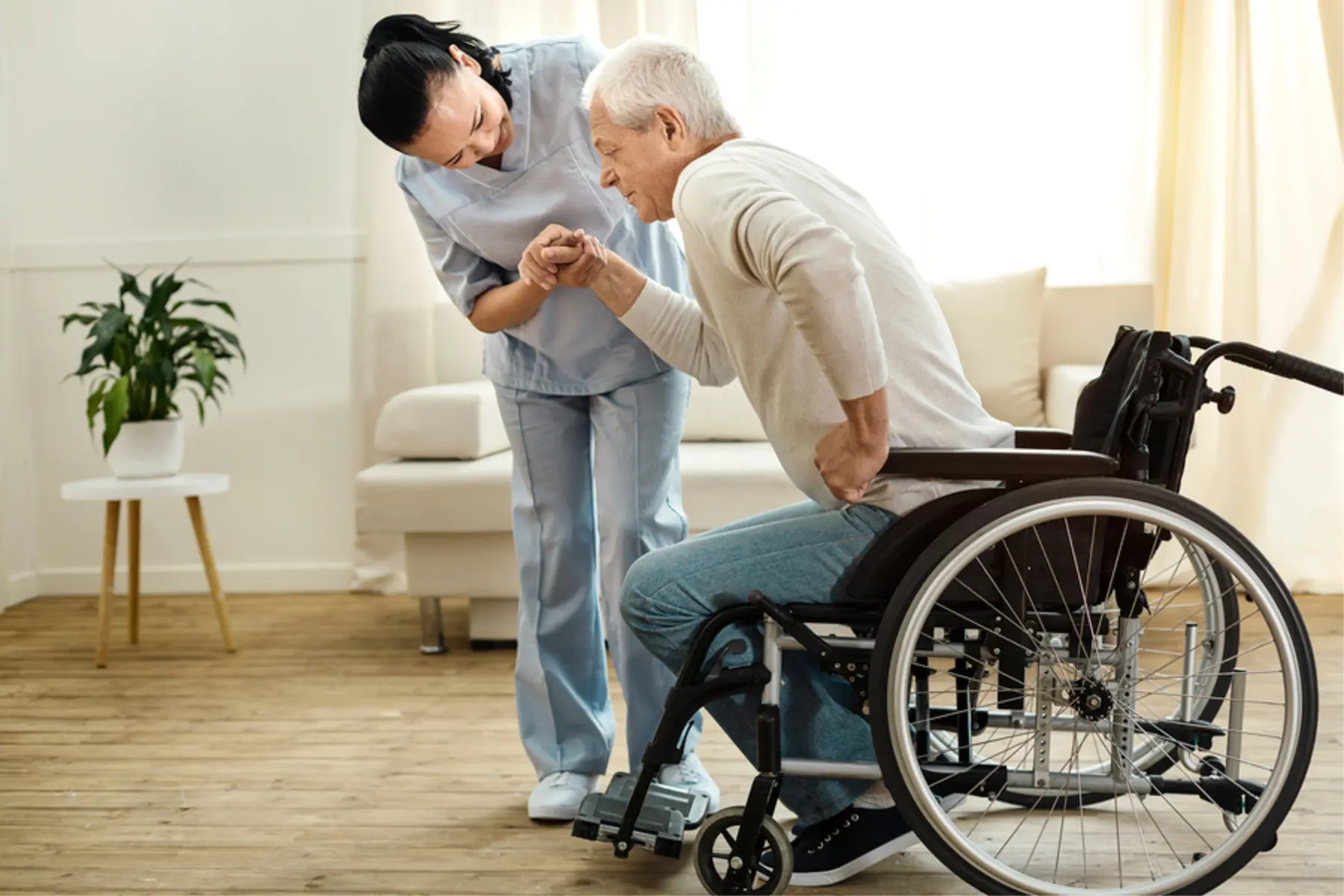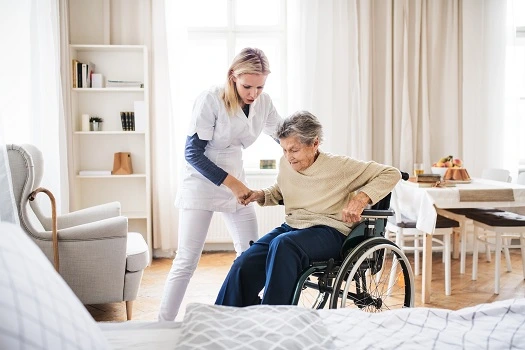The fusion of hospitality practices with innovative accessibility solutions in residential settings is gaining traction. Drawing parallels between the service-centric ethos of restaurants and the challenges faced at home, this discussion explores tailored solutions to elevate accessibility and comfort.
By blending comfort, hospitality, and improving mobility at home, we uncover a symbiotic relationship that enhances the overall home experience.
Key Takeaways
- Tailored solutions such as grab bars, ramps, and smart home technologies promote inclusivity and accessibility in both home and restaurant settings.
- Understanding and implementing accessibility features like wide doorways, clear signage, and tactile menus enhance the dining experience for individuals with mobility challenges.
- Innovative mobility solutions such as robotic assistance and smart home technology significantly improve independence and mobility for those with limited mobility.
- Community support and technology advancements play a crucial role in enhancing mobility, accessibility, and overall well-being for individuals facing mobility challenges.
Understanding Mobility Challenges
Navigating daily tasks can pose significant challenges for individuals with limited mobility, impacting their quality of life and independence. Understanding the specific mobility challenges faced by individuals is crucial in developing effective solutions to improve their daily living experiences. Mobility issues can stem from various factors, including physical disabilities, age-related limitations, injuries, or medical conditions. These challenges can manifest in difficulties with tasks such as getting in and out of chairs, walking short distances, reaching high shelves, or navigating narrow spaces.
Moreover, limited mobility can lead to feelings of frustration, dependency, and isolation, highlighting the importance of addressing these challenges comprehensively. By recognizing the unique struggles faced by individuals with mobility limitations, we can tailor solutions that promote inclusivity and accessibility in both home and restaurant settings. Through a combination of assistive devices, ergonomic design principles, and supportive environments, it is possible to enhance mobility and create a more inclusive society for all individuals, irrespective of their physical abilities.
Implementing Home Accessibility Solutions
Understanding the challenges associated with limited mobility underscores the significance of implementing effective home accessibility solutions tailored to enhance daily living experiences and promote independence. Home accessibility solutions encompass a range of modifications and assistive devices designed to make living spaces more accommodating for individuals with mobility limitations. These solutions may include installing grab bars in bathrooms, ramps at entrances, stairlifts for multi-level homes, and widened doorways to accommodate wheelchairs. Additionally, smart home technologies such as voice-activated controls and automated lighting systems can further enhance accessibility and convenience for individuals with limited mobility.
Implementing home accessibility solutions requires careful assessment of the individual’s specific needs and living environment. Consulting with occupational therapists, home accessibility specialists, and healthcare providers can help identify the most suitable solutions to improve mobility and overall quality of life. Furthermore, staying informed about available resources, such as government assistance programs and grants for home modifications, can make implementing accessibility solutions more feasible for individuals with financial constraints. By proactively addressing home accessibility, individuals with limited mobility can maintain their independence and enjoy a more comfortable and inclusive living environment.

Exploring Restaurant Accessibility Features
Exploring the diverse array of accessibility features available in restaurants provides valuable insights into enhancing the dining experience for individuals with mobility challenges. Restaurants that prioritize accessibility often have features like ramps with appropriate slopes, wide doorways, and spacious dining areas to accommodate wheelchairs and mobility aids. Moreover, tactile or braille menus, adjustable table heights, and staff trained in assisting individuals with disabilities further contribute to a welcoming environment.
Some establishments also offer hearing loop systems for patrons with hearing impairments, ensuring they can fully engage in the dining experience. Additionally, clear signage, well-lit spaces, and accessible restrooms are essential components of a fully inclusive dining setting. By incorporating these accessibility features, restaurants not only cater to a wider range of customers but also demonstrate their commitment to inclusivity and hospitality.
Ultimately, creating a dining environment that is accessible to all patrons enhances the overall dining experience and fosters a sense of belonging and comfort for individuals with mobility challenges.
Comparing Home and Restaurant Mobility Needs
In considering mobility needs, a comparative analysis between home and restaurant environments reveals distinct requirements for individuals with mobility challenges.
- Space Layout: Homes often have narrower spaces and more obstacles, like furniture, which can impede movement compared to the more open layouts of restaurants.
- Accessibility Features: While homes can be modified with permanent accessibility features like ramps and stairlifts, restaurants often rely on temporary solutions like portable ramps.
- Assistive Devices: Individuals at home may have their own customized assistive devices, whereas restaurants may provide generic options like wheelchairs.
- Staff Training: Home caregivers are familiar with the specific needs of the individual, but in restaurants, staff training is crucial to provide appropriate assistance efficiently.
Understanding these differences is essential for tailoring mobility solutions effectively in both home and restaurant settings, ensuring individuals with mobility challenges can navigate their environments with ease and comfort.
Enhancing Comfort and Hospitality at Home
Enhancing comfort and hospitality at home involves creating a welcoming and accommodating environment tailored to meet the unique needs of individuals with mobility challenges. To achieve this, it is essential to consider various aspects of the living space, such as furniture arrangement, accessibility features, lighting, and overall ambiance. Making adjustments like installing grab bars in bathrooms, ensuring clear pathways throughout the house, and providing comfortable seating options can significantly enhance the comfort and safety of individuals with mobility issues.
Moreover, incorporating elements of hospitality into the home environment can further elevate the overall experience. This can include setting up cozy seating areas for socializing, optimizing kitchen layouts for easy meal preparation, and integrating technology for convenience and entertainment. Creating a warm and inviting atmosphere not only enhances comfort but also promotes a sense of belonging and well-being for individuals facing mobility challenges.
Innovative Mobility Solutions for Improved Living
When considering ways to enhance the quality of life for individuals with mobility challenges, the integration of innovative mobility solutions becomes paramount in facilitating improved living conditions and independence. Innovative solutions can significantly impact the daily lives of those with mobility issues.
Here are four cutting-edge mobility solutions that are revolutionizing the way individuals with mobility challenges navigate their living spaces:
- Smart Home Technology: Incorporating voice-activated devices and automated systems can enable individuals to control various aspects of their homes independently.
- Robotic Assistance: Utilizing robots for tasks like fetching items, opening doors, or providing physical support can enhance autonomy for individuals with mobility limitations.
- Exoskeleton Technology: Wearable exoskeletons can assist individuals with mobility impairments by providing support and enhancing their strength and mobility.
- Telemedicine Services: Virtual medical consultations and remote monitoring can improve access to healthcare for individuals with mobility challenges, reducing the need for frequent in-person visits.
These innovative solutions not only improve mobility but also contribute to a more inclusive and independent living environment for individuals with mobility challenges.
Frequently Asked Questions
How Can Individuals With Mobility Challenges Maintain Independence While Dining Out?
Individuals with mobility challenges can maintain independence while dining out by choosing restaurants with accessible facilities, requesting assistance when needed, utilizing mobility aids like wheelchairs or walkers, and planning ahead for a comfortable and enjoyable dining experience.
Are There Specific Restaurant Features That Cater to Individuals With Mobility Impairments?
Specific restaurant features catering to individuals with mobility impairments include wheelchair-accessible entrances, spacious seating arrangements, grab bars in restrooms, ramps, and menus in large print or braille. These features enhance accessibility and ensure a comfortable dining experience.
What Are Some Common Obstacles Faced by Individuals With Mobility Issues in Both Home and Restaurant Settings?
Common obstacles faced by individuals with mobility issues include limited accessibility, narrow doorways, high thresholds, and lack of ramps. In both home and restaurant settings, these challenges can restrict movement and hinder independence and comfort.
How Can Home Accessibility Solutions Be Adapted to Improve Comfort and Hospitality for Individuals With Mobility Challenges?
Improving comfort and hospitality for individuals with mobility challenges involves adapting home accessibility solutions. This includes installing ramps, grab bars, and widening doorways. Personalized adjustments like stairlifts and accessible bathrooms enhance independence and quality of life.
Are There Any New and Innovative Mobility Solutions That Can Significantly Enhance the Quality of Life for Individuals With Mobility Impairments at Home?
Innovative mobility solutions continually enhance the quality of life for individuals facing mobility impairments. These advancements offer increased independence, safety, and convenience within the home environment, promoting a more comfortable and fulfilling lifestyle for those with mobility challenges.
Conclusion
In conclusion, the integration of hospitality principles and innovative mobility solutions offers a promising approach to enhancing accessibility and comfort within residential settings. By drawing parallels between restaurant practices and home environments, tailored solutions can be implemented to address specific mobility challenges and improve overall quality of life.
Through a customer-centric focus and a commitment to functional efficiency, individuals can create more inclusive and welcoming living spaces that prioritize comfort and hospitality.
You may also like to read:
Secrets to Restaurant Entrepreneur’s Wellness: Personalized Chiropractic Healing


